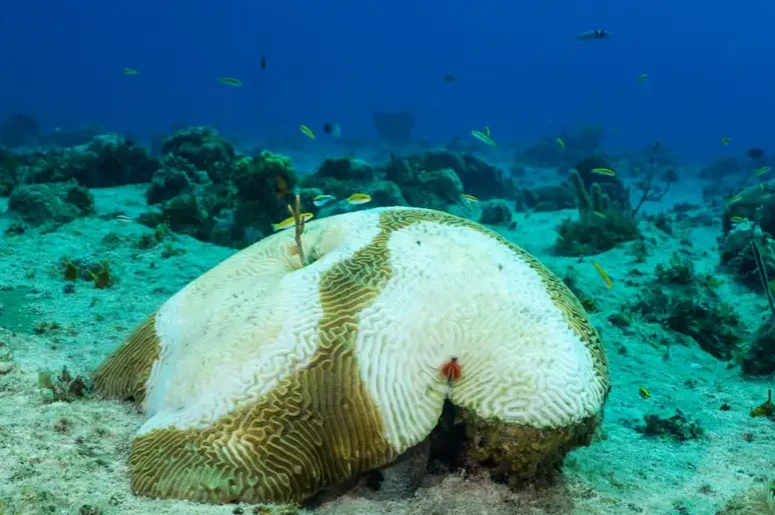Antibiotics are being applied to reefs to prevent coral disease
A third of scientists working on AI say it could cause global disaster / Powerful people are less likely to be understanding when mistakes are made, study finds
To combat the spread of a mysterious disease affecting Caribbean corals, researchers are manually smearing thousands of corals with antibiotic goo. Others are now administering probiotics to corals in an effort to increase their resistance to the disease.
Since the first detection of Stony coral tissue loss disease (SCTLD) off the coast of Miami, Florida in 2014, scientists have struggled to comprehend this mysterious pathogen. The disease only affects hard corals – the coral-building species with calcium carbonate skeletons.
When a coral is infected with SCTLD, it sheds chunks of its vibrant soft tissue, revealing its white skeleton. Within weeks, the infection can spread to and kill the surrounding reef, leaving behind a spectral coral graveyard. In the eight years since its discovery, SCTLD has spread across reefs from Florida to Grenada, with mortality rates in some coral species approaching 100 percent.
According to Blake Ushijima of the University of North Carolina Wilmington, the animal's tissue is essentially dissolving away. Already, it has altered the entire Caribbean.
Researchers are unable to determine whether the pathogen responsible for SCTLD is a bacterium or a virus, making it difficult to develop treatments for the disease. Marine ecologists have tested a variety of treatments on corals in both aquarium tanks and the wild with varying degrees of success.
The application of an antibiotic paste directly to the corals is a promising but labor-intensive method. Using a tube resembling a caulk gun, scuba divers apply the thick, amoxicillin-laced paste to the edge of a lesion in an effort to stop the spread of the disease. Even though amoxicillin targets bacteria, it may be able to slow the progression of virally-caused lesions.
The treatment halted the progression of the disease in 67 to 90 percent of five different coral species in Florida, depending on the species, according to a study conducted in 2020. According to a study published the following year, the amoxicillin treatment cured 95% of coral disease lesions, though some required additional treatment.
“It’s like a cauterisation of the tissue and the disease at that point in time,” says Brian Walker at Nova Southeastern University in Florida. Over 21,000 corals in the state have been treated with amoxicillin paste since 2018.

Stony coral tissue loss disease has begun to eat away at this coral.
Concerning the use of amoxicillin paste in the ocean, however, is the development of antibiotic resistance in other marine organisms. This prompted Ushijima and his former colleague Valerie Paul at the Smithsonian Marine Station in Florida to investigate an additional potential solution: probiotics that could make corals more resistant to the disease.
They began by isolating bacteria growing on corals that appeared to be the most resistant to infection, and then applied a paste containing these bacteria to both sick and healthy corals to provide a boost. In addition to the probiotic paste, the researchers are testing a technique in which they cover corals with clear plastic garbage bags. Before removing the bag, they inject the probiotic slurry into the tent, dosing the coral with bacteria over the next two hours. “It’s kind of like creating our own little mini aquarium,” says Paul.
Early in 2020, the researchers began field testing the probiotic paste, but their progress was halted by the covid-19 pandemic. Paul reports that in some of the dozens of corals they have treated so far, the disease has slowed or stopped. Until researchers conduct additional field trials with probiotics, amoxicillin paste will continue to be the standard treatment.
“There’s some controversy as to whether you should be using antibiotics in the natural environment,” says Walker. “But the alternative is to watch everything die.”
End of content
Không có tin nào tiếp theo
